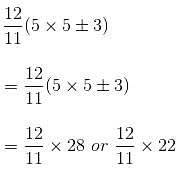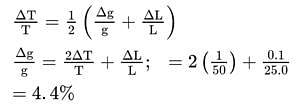DSSSB PGT Physics Mock Test - 6 - DSSSB TGT/PGT/PRT MCQ
30 Questions MCQ Test DSSSB PGT Mock Test Series 2024 - DSSSB PGT Physics Mock Test - 6
Directions: Study the following information carefully and answer the questions given below:
M, V, K, D, T, J, and R are seven friends studying different classes III, IV, V, VI, VII, VIII, and IX standards. Each of them has different favourite colours-yellow, blue, red, white, black, green, and violet. J likes red and studies in class V. R likes violet and studies in Class III. M studies in Class VIII and does not like either green or yellow. K likes white and does not study either in VII or in IV. D studies in VI and likes black, T does not study in IV. V does not like green.
Q. Who studies in class IX?
Directions: Study the following information carefully and answer the questions given below:
M, V, K, D, T, J and R are seven friends studying different classes III, IV, V, VI, VII, VIII and IX standards. Each of them has different favourite colours-yellow, blue, red, white, black, green and violet. J likes red and studies in class V. R likes violet and studies in Class III. M studies in Class VIII and does not like either green or yellow. K likes white and does not study either in VII or in IV. D studies in VI and likes black, T does not study in IV. V does not like green.
Q. What is M’s favourite colour?
| 1 Crore+ students have signed up on EduRev. Have you? Download the App |
Directions: Study the following information carefully and answer the questions given below:
M, V, K, D, T, J and R are seven friends studying different classes III, IV, V, VI, VII, VIII and IX standards. Each of them has different favourite colours-yellow, blue, red, white, black, green and violet. J likes red and studies in class V. R likes violet and studies in Class III. M studies in Class VIII and does not like either green or yellow. K likes white and does not study either in VII or in IV. D studies in VI and likes black, T does not study in IV. V does not like green.
Q. What is V’s favourite colour?
Directions: Study the following information carefully and answer the questions given below:
M, V, K, D, T, J, and R are seven friends studying different classes III, IV, V, VI, VII, VIII, and IX standards. Each of them has different favourite colours-yellow, blue, red, white, black, green, and violet. J likes red and studies in class V. R likes violet and studies in Class III. M studies in Class VIII and does not like either green or yellow. K likes white and does not study either in VII or in IV. D studies in VI and likes black, T does not study in IV. V does not like green.
Q. In which standard does ‘V’ study?
Directions: Study the following information carefully and answer the questions given below:
M, T, J, R, D, W and Q are seven friends traveling in three cars – X, Y, and Z with at least two persons in each car. There are three female members among them with at least one in each car. T travels only with her boyfriend Q in car Y. M travels in his car X. D, a male, and W do not travel in car Z. J is not a female member and W is a female.
Q. J travels in which car?
What is the region represented by x > 0 and y < 0?
By solving inequality 3(a - 6) < 4 + a, answer will be
Find the solution for the pair of inequations x > 1 and x < -1
The solution of the inequality 3(2-x)≥2(1-x) for real x is :
Find the solution for the pair of solution x > 1 and x > -1
At what time between 5 and 6 o'clock will the hands of a clock be 3 minutes apart?
At what time between 4:15 a.m. and 5:05 a.m. will the angle between the hour hand and the minute hand of a clock be the same as the angle between the hands at 8:45 p.m.?
Alex turned a clock on at 3:00 pm. But the clock is defective, due to which it lags behind by 9 minutes after each day (24 hours). What will be the real time when the clock indicates 6:00 am on the 4th day of it's successive working?
If 15th March, 2013 was a Friday, then 10th July, 2013 will be a
At what time between 7 o'clock and 8 o'clock will the hands of a clock be in a straight line but not together?
Population of a town is reported as 157,900 . Which of the following statements correct?
According to the principle of homogeneity of dimensions:
What is the unit for measuring the amplitude of a sound?
At a certain place, the acceleration due to gravity is determined using a simple pendulum. The length of the pendulum is 25.0 cm and a stopwatch with least count is 1 s measures the time taken by the pendulum for 40 oscilations to be 50 s. the accuracy in the measurement of g is:
Consider a rubber ball freely falling from a height h = 4.9 m onto a horizontal elastic plate. Assume that the duration of the collision is negligible and the collision with the plate is totally elastic. Then the velocity as a function of time the height as a function of time will be:
[AIEEE 2009]
A particle has initial velocity (2i + 3j) and acceleration (0.3i + 0.2j). The magnitude of velocity after 10 s will be:
A small particle of mass m is projected at an angle θ with the x-axis with an initial velocity v0 in the x-y plane as shown in the figure. At a time , the angular momentum of the particle is:
[AIEEE 2010]
A particle is moving with velocity where k is a constant. The general equation for its path is:
[AIEEE 2010]
Figure shows the displacement – time graph of a particle moving along X – axis.








 mins or 24 mins
mins or 24 mins
 minutes past 4 o'clock
minutes past 4 o'clock on this clock = 24 hr on the correct clock
on this clock = 24 hr on the correct clock hr on the correct clock
hr on the correct clock



















